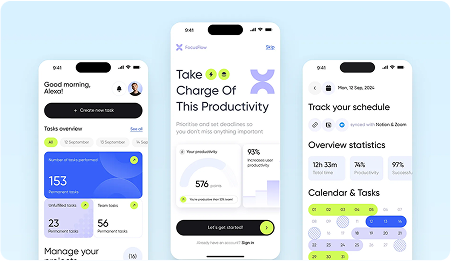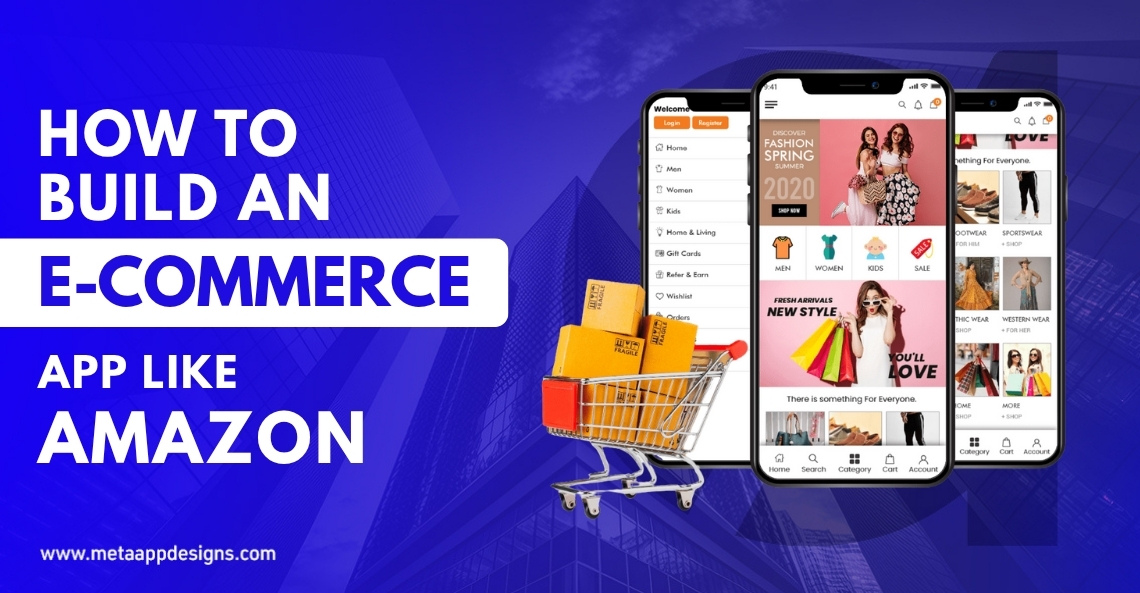
How to Build an E-Commerce App Like Amazon
Building an e-commerce app like Amazon is a challenging yet highly rewarding project. The mobile commerce trend is growing rapidly, and businesses are beginning to realize the importance of having an app to engage their users. This comprehensive guide will help you navigate the process of building an e-commerce app similar to Amazon.
Thank you for reading this post, don't forget to subscribe!Why Build an E-Commerce App Like Amazon?
Table Of Content
Creating an e-commerce mobile application that mirrors Amazon’s structure can be incredibly beneficial. The mobile app market is booming, and consumers are increasingly opting for apps over websites due to their faster, more convenient shopping experience. Building an app like Amazon can help you expand your reach, enhance customer loyalty, and boost your sales.
The Mobile E-Commerce Surge
Recent studies show that over 60% of internet traffic comes from mobile devices, and this figure is growing each year. Apps provide an ideal platform for customers to shop, pay, and track their orders with a single click. An e-commerce app enables users to purchase products instantly, making it a crucial business tool.
Competing with Industry Giants
Amazon’s success stems from its massive product selection, user trust, and efficient shopping experience. However, there’s room for competition if you can deliver an app with unique features, a smooth user interface, and outstanding customer service. Your eCommerce mobile application development process must focus on these factors to stand out from the crowd.
Key Features Your Amazon-Style App Needs
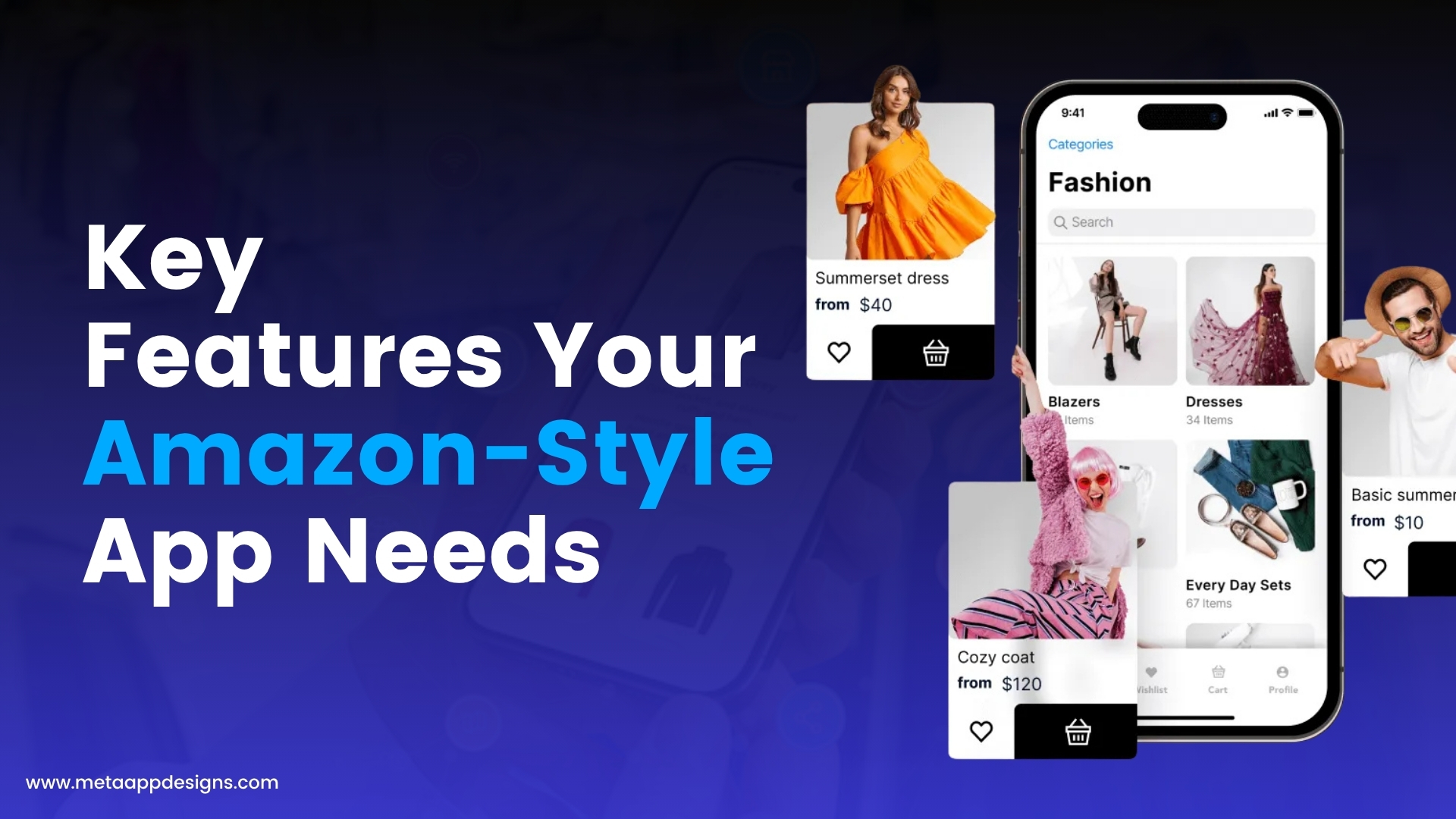
When building an e-commerce app, certain features are non-negotiable if you want to compete with established platforms like Amazon. Below, we detail the essential features that your app must include to succeed.
Product Catalog and Search Functionality
An organized and detailed product catalog is a must. Users should be able to browse, filter, and search for products quickly and efficiently. Product pages should display key details, including images, pricing, descriptions, and reviews. To improve the user experience, implement smart search features such as auto-suggestions, product recommendations, and voice search.
User Profiles and Personalization
Personalization is key to building customer loyalty. Allow users to create profiles to store preferences, payment information, order history, and shipping addresses. Additionally, personalized product recommendations based on browsing history will enhance the shopping experience.
Secure Payment Gateway Integration
Users need to trust your app with their sensitive payment data. Integrating a reliable and secure payment system is crucial. Offer multiple payment methods, including credit/debit cards, PayPal, Google Pay, and other popular payment systems. Implementing a secure checkout process will not only protect user data but also improve customer confidence.
Order Tracking and Customer Support
After making a purchase, users want to track their orders in real-time. Providing a robust order tracking system is vital. Additionally, incorporating a customer support chat feature or a support ticket system will help resolve issues and inquiries efficiently.
Push Notifications and Alerts
Push notifications are a great way to keep customers engaged. Notify users about promotions, order updates, price drops, or new arrivals. Personalized alerts will drive engagement, improve retention, and increase sales.
Steps to Build an E-Commerce App Like Amazon
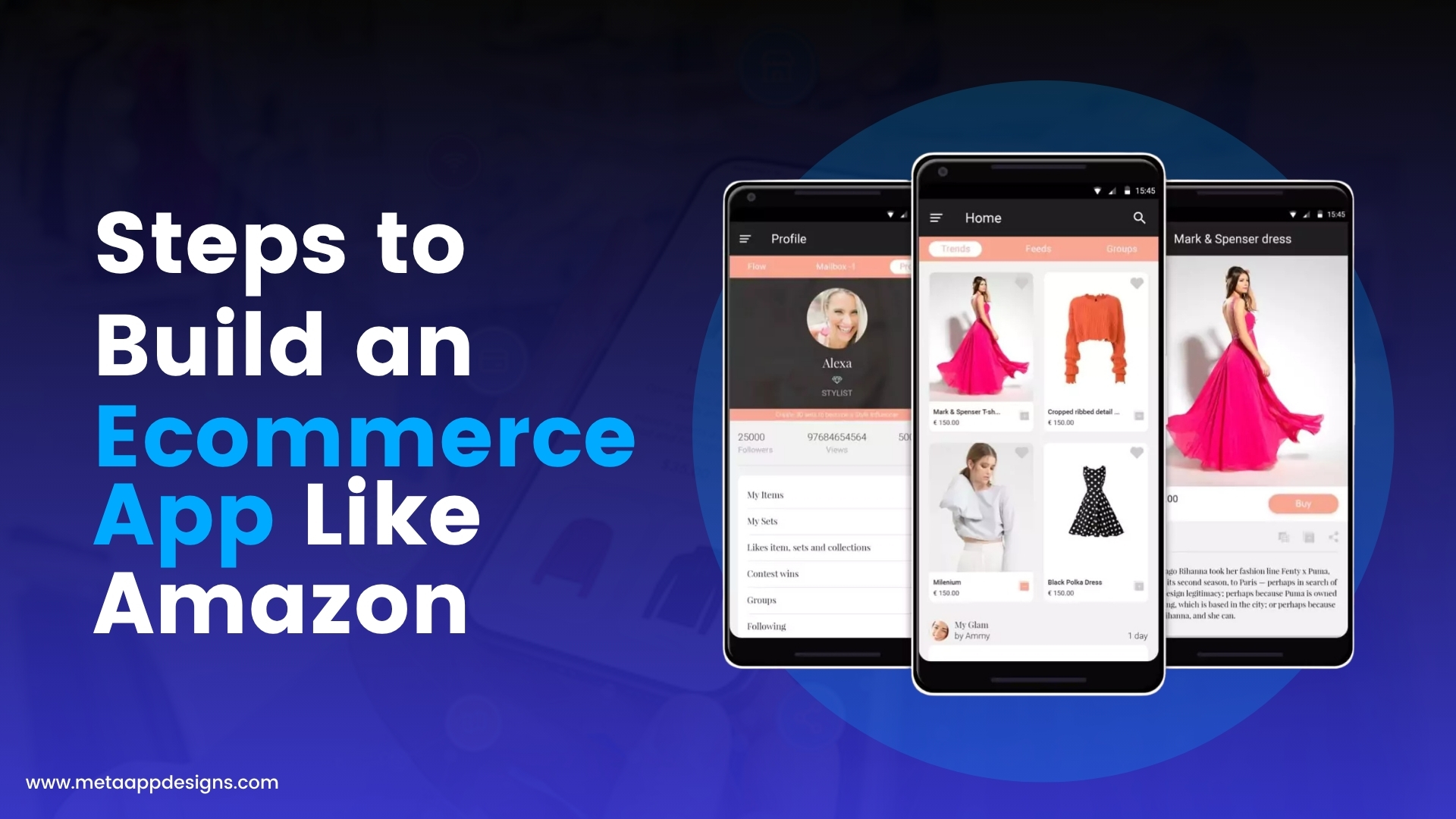
Creating an e-commerce mobile application like Amazon involves several steps. These steps will guide you from the initial planning phase to the final deployment of your app.
Step 1: Market Research and Requirements
Before jumping into the development process, conduct thorough market research. Identify your target audience and study your competitors. This will help you understand what features are necessary and what gaps you can fill to create a competitive advantage.
Identify Your Niche
Amazon is a massive marketplace, but your app doesn’t need to sell everything. Define your niche to focus on specific categories, such as fashion, electronics, or home goods. This will help you tailor your app’s features and marketing strategies accordingly.
Understand the Competition
Look at other top e-commerce platforms such as eBay, Flipkart, and Alibaba. Analyze their strengths, weaknesses, and customer feedback to identify areas for improvement.
Define Features and MVP
An MVP (Minimum Viable Product) will allow you to launch your app faster and gather feedback from real users. Focus on the core features first product catalog, secure payment, order tracking, etc. Once you have these in place, you can start adding additional features.
Step 2: Choose the Right Tech Stack
The success of your e-commerce app heavily depends on the technology stack you choose. Your tech stack should be scalable, secure, and reliable.
Frontend Technologies
You can opt for native development (iOS and Android) or a cross-platform approach. If you want high performance, go with native apps. However, if you are looking to cut costs and time-to-market, cross-platform frameworks like React Native or Flutter are excellent choices.
Backend Technologies
The backend of your app should be robust, scalable, and secure. Popular backend technologies for e-commerce apps include Node.js, Ruby on Rails, and Django. Consider using cloud-based solutions like AWS or Google Cloud for storage and scalability.
Database Choices
Choosing the right database is crucial for storing user data, product information, and transactions. Common choices include MySQL, PostgreSQL, and MongoDB.
Step 3: Design UI/UX
A seamless, intuitive design is essential to the success of your e-commerce app. Keep the UI clean and clutter-free to ensure users can navigate the app easily.
User Interface (UI)
Ensure your UI is designed with the user in mind. It should be visually appealing and easy to navigate. Product categories should be easy to find, and the checkout process should be simple.
User Experience (UX)
UX refers to the overall experience a user has when interacting with the app. Test different workflows —such as registration, product browsing, and checkout —to ensure they are optimized for ease of use.
Step 4: Development and Testing
The actual development of your app begins once the design phase is complete.
Backend Development
Set up your database, server-side logic, APIs, and integrate third-party services like payment gateways. This is the core functionality of your e-commerce app.
Frontend Development
In this phase, your development team will bring the UI/UX designs to life. They will develop the app for both iOS and Android, integrating features such as product catalogs, user profiles, payment systems, and more.
Testing
Test your app rigorously to ensure it is free from bugs and errors. Focus on unit testing, integration testing, and performance testing. Test the app’s security features to ensure it meets industry standards.
Step 5: Deployment and Launch
Once everything is developed and tested, it’s time to deploy the app on the App Store and Google Play.
Pre-launch Checklist
- Ensure your app meets the App Store and Google Play guidelines.
- Test the app’s functionality one last time before submission.
- Create marketing materials (screenshots, descriptions, keywords).
Launch and Post-launch
After the launch, monitor the app’s performance, gather user feedback, and resolve any issues quickly. Focus on optimizing and scaling the app based on usage patterns.
How an Ecommerce App Development Company Can Help
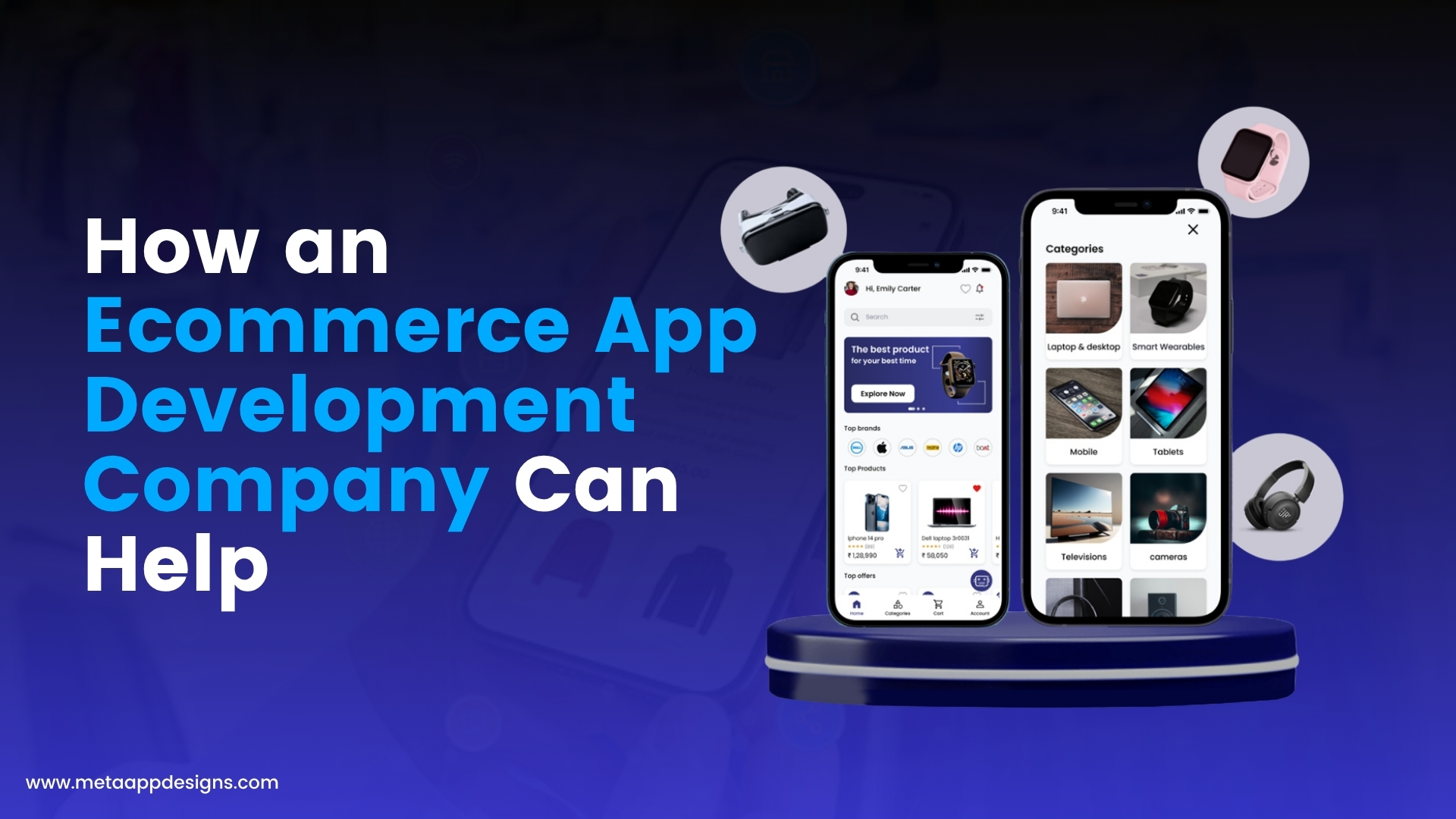
Building an e-commerce mobile application requires expertise, time, and resources. Working with an experienced ecommerce app development company can save you time and money. A professional development company can help you build a high-quality, user-friendly, and scalable app.
Full-Service Development
An experienced ecommerce application development services provider can handle everything, from ideation and design to development and deployment. They will ensure your app is well-optimized and fully functional, so you can focus on growing your business.
Post-Launch Support
A great e-commerce app doesn’t stop at launch. A reliable ecommerce app development company will offer ongoing support, ensuring that bugs are fixed and new features are added regularly.
How to Hire Ecommerce App Developers
When hiring ecommerce app developers, look for candidates with a strong background in building e-commerce applications. Here’s how you can find the right fit:
Look for E-Commerce Experience
Hiring developers who have experience building e-commerce apps with the required features is essential. Check their portfolio and past work to assess their skills.
Communication and Development Process
Ensure the developers follow a clear development process. Communication is key, so choose a team that is responsive and transparent.
Post-Launch Support
Choose a development team that offers post-launch support, including bug fixes, security updates, and feature upgrades.
Cost and Time Estimates
Building an e-commerce app like Amazon is a major investment. Here’s what you can expect in terms of cost and time:
| Stage | Weeks | Cost Estimate |
| MVP (Basic Features) | 12–16 | $40,000 – $80,000 |
| Full Version (Advanced) | 24–36 | $100,000+ |
| Maintenance & Scaling | Ongoing | 15–25% of the development cost |
Marketing and Scaling Your E-Commerce App
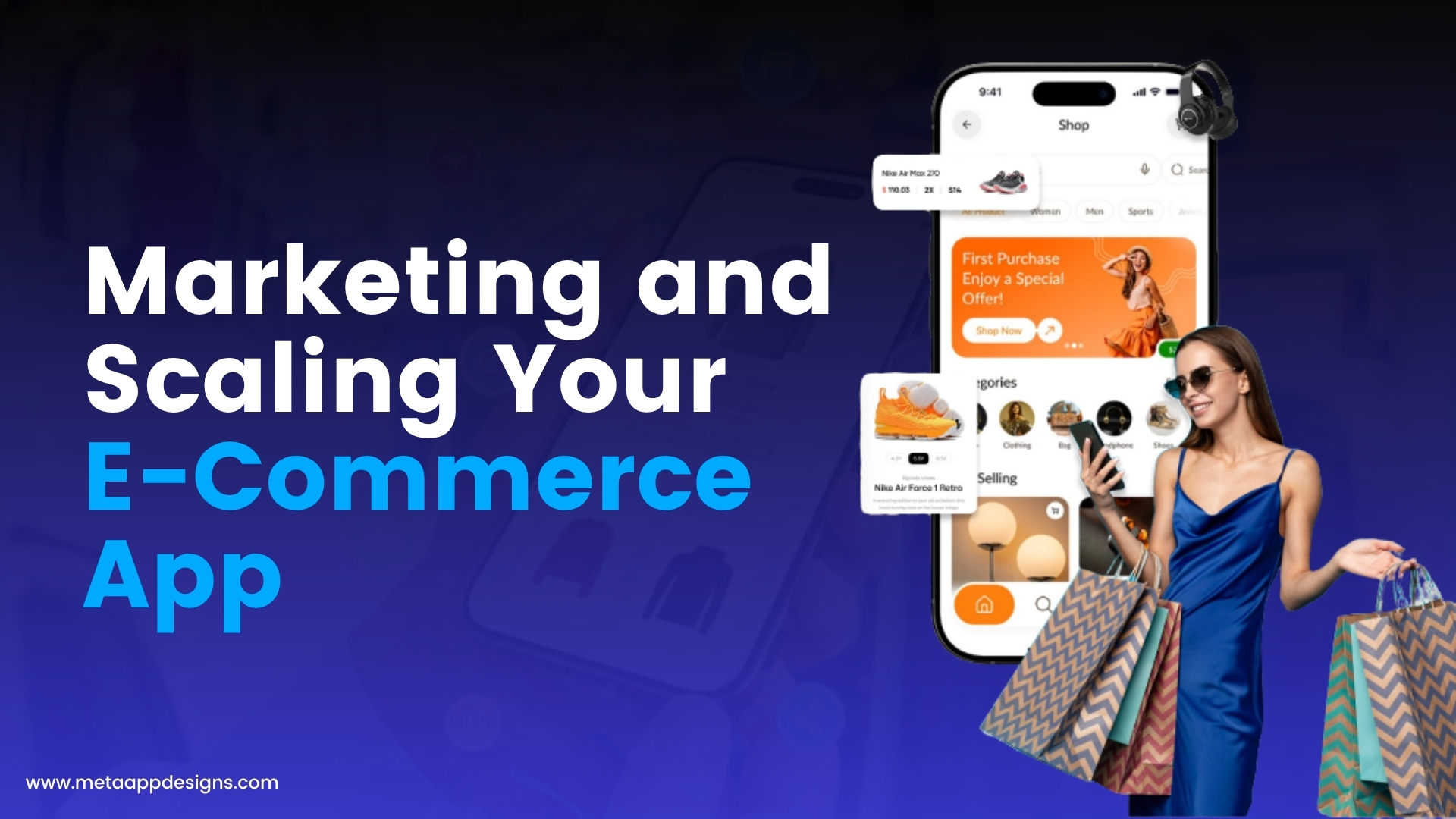
Building an e-commerce app like Amazon is only half the journey, the real challenge begins after launch. To achieve long-term success, you must effectively market your app, retain users, and scale operations strategically. The post-launch phase determines how well your app performs in the market, how it attracts users, and how it sustains growth over time.
Below are key strategies and stages to help you market, promote, and scale your e-commerce app efficiently.
1. Crafting a Powerful Marketing Strategy
Once your app is launched, your immediate goal should be to generate awareness and encourage downloads. A comprehensive marketing strategy will help you reach your target audience and establish a strong digital presence. Start by identifying your unique selling proposition (USP), what makes your e-commerce app different from competitors like Amazon or Flipkart. It could be a better user experience, a specific niche focus, faster delivery, or superior customer service.
App Store Optimization (ASO) plays a crucial role in ensuring your app ranks high in search results on the App Store and Google Play. Optimize your app’s title, description, and screenshots using relevant keywords that reflect your niche and offerings. High-quality visuals, positive reviews, and regular updates also enhance visibility.
2. Retaining Users and Enhancing Engagement
User retention is just as critical as acquisition. Once users download your app, the goal is to keep them active and satisfied. A poor retention rate often indicates issues with the app experience, customer service, or value proposition.
Start by offering personalized experiences based on user behavior. Use data analytics to track browsing and purchase patterns, then provide tailored product recommendations, discounts, and notifications. The more relevant your offers, the more likely users are to engage.
Another effective tactic is implementing a loyalty or rewards program. Reward users for frequent purchases, referrals, or app engagement. These incentives not only drive repeat business but also turn existing users into brand advocates who promote your app organically.
3. Scaling Your E-Commerce App for Growth
As your user base and transactions increase, scalability becomes crucial. Scaling isn’t just about adding more users; it’s about ensuring your app can handle growing demand while maintaining performance, security, and user satisfaction.
Start by investing in cloud infrastructure such as AWS, Google Cloud, or Microsoft Azure. These platforms provide flexible scalability options that allow you to handle spikes in traffic without downtime. Load balancing, content delivery networks (CDNs), and microservices architecture can further enhance performance and reliability.
Regular app performance monitoring is also essential. Track metrics such as response time, crash rates, user churn, and conversion rates. Use this data to identify bottlenecks and optimize accordingly.
From a business perspective, consider expanding your product range and market reach gradually. Partner with new suppliers, enter different regions, and diversify product categories.
Conclusion
Building an e-commerce app like Amazon requires careful planning, a solid tech stack, and expert developers. With the right approach, you can create an app that rivals Amazon in terms of user experience, features, and performance. By partnering with an experienced ecommerce app development company, you’ll save time and ensure the app’s success.
For businesses looking to develop a world-class e-commerce app, consider working with Meta App Designs, a leading ecommerce mobile application development company known for delivering high-quality solutions.
Frequently Asked Questions
Typically, it takes between 12 and 36 weeks to build an MVP and full-featured app, depending on complexity.
The cost can range from $40,000 for a basic MVP to $100,000 or more for a full-featured app.
Use encryption for payments and sensitive data, integrate secure payment gateways, and conduct regular security audits.
Yes, you can scale the app as your business grows by adding new features, expanding product categories, and optimizing for performance.
Start with product catalog, payment integration, order tracking, and user profiles. You can add advanced features later.
- Ecommerce App
- eCommerce app development company
- eCommerce app development services
- Ecommerce Mobile Application
- Ecommerce Mobile Application Development
Table Of Content








